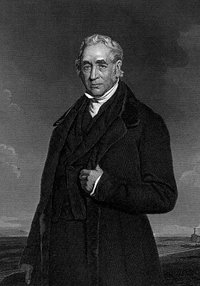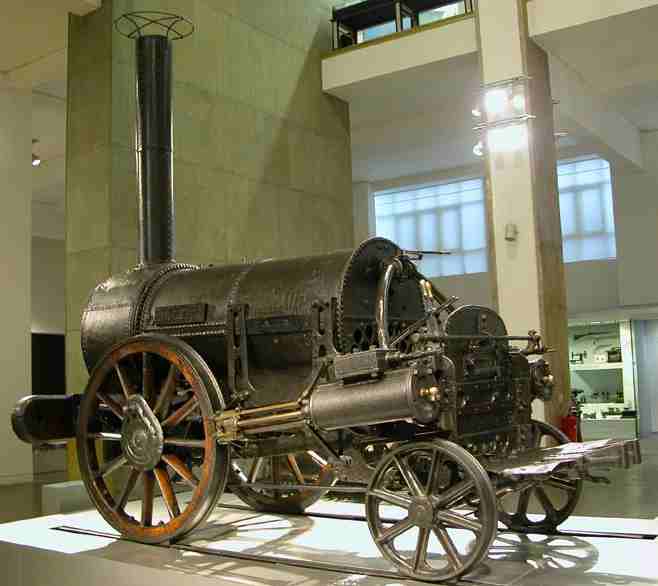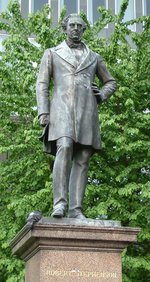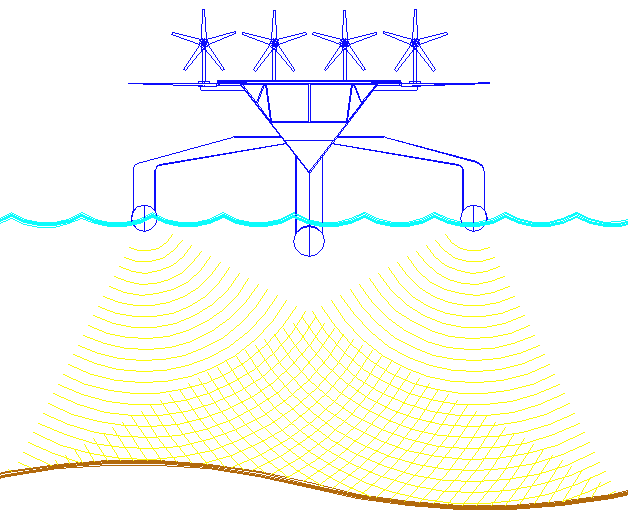|
GEORGE STEPHENSON
|
|||
|
George Stephenson (June 9, 1781 – August 12, 1848) was a British engineer who designed a famous and historically important steam-powered locomotive named Rocket, and is known as the Father of British Steam Railways.
George Stephenson was born in Wylam, England, 9.3 miles (15 km) west of Newcastle upon Tyne. In 1748, a wagonway - an arrangement similar to a railway, but with wooden tracks and designed to support horse-drawn carts - had been built from the Wylam colliery to the River Tyne, running for several miles (several km). The young Stephenson grew up near it, and in 1802 gained employment as an engine-man at a coal mine. For the next ten years his knowledge of steam engines increased, until in 1812 he stopped operating them for a living, and started building them.
George Stephenson
Stephenson designed his first locomotive in 1814, a travelling engine designed for hauling coal on a coal site. Named Blucher, it could haul 30 tons of coal in a load, and was the first successful flanged wheel adhesion locomotive (which is to say, it was the first locomotive to use flanged wheels to rest on the track, and that its traction depended only on the contact between the wheel and the track). Over the next five years, he built sixteen more engines.
As his success grew, Stephenson was hired to build an 8 mile (13 km) railway from Hetton to Sunderland. The finished result used a combination of gravity pulling the load down inclines and locomotives for level and upward stretches, and was the first ever railway to use no animal power at all.
In 1821, a project began to build the Stockton and Darlington Railway. Originally the plan was to use horses to draw coal carts over metal rails, but after company director Edward Pease met with Stephenson he agreed to change plans. Work began in 1822, and in September 1825, Stephenson completed the first locomotive for the new railroad; named at first Active, it was soon renamed Locomotion.
The Stockton and Darlington opened on 27 September 1825. Driven by Stephenson, Locomotion hauled an 80 ton load of coal and flour for nine miles (15 km) over two hours, reaching a speed of 24 miles per hour (39 km/h) over one stretch. The first purpose-built passenger car (dubbed Experiment) was also attached, and held a load of dignitaries for the opening journey. It was the first time passenger traffic had ever been run on a steam-driven locomotive railway.
While building the S&D railway, Stephenson had noticed that even small inclines greatly reduced the speed of his locomotives. One might add that even slight declines would have made the primitive brakes next to useless. He came to the conclusion that railways should be kept as level as possible. He used this knowledge while working on the Bolton and Leigh Railroad and the Liverpool and Manchester Railway, executing a series of difficult cuts, embankments, and stone viaducts to smooth the route the railways took.
As the Liverpool & Manchester approached completion in 1829, the directors of that company arranged for a competition to decide who would build the locomotives for the new railway. The Rainhill Trials were run in October of that year. Stephenson's entry was Rocket, and its impressive performance in winning the contest made it arguably the most famous railway machine in the world.
The Rocket
When the L&MR opened on 15 September 1830, the opening ceremony was a considerable event, drawing luminaries from the government and industry, including the then Prime Minister the Duke of Wellington. The day was marred by the death of William Huskisson (Member of Parliament for Liverpool) who was struck and killed by Rocket, but the railroad was a resounding success.
Stephenson became a very famous man, and was offered the position of chief engineer for a wide variety of other railroads. Rich and successful for the remainder of his career, George Stephenson passed away on 12 August 1848 in Chesterfield, England.
Stephenson's son, Robert Stephenson, was also a noted locomotive engineer, and was heavily involved in the creation of many of his father's engines from Locomotion onwards. Joseph Locke was initially apprenticed to George Stephenson, eventually being promoted to chief engineer on some of the schemes he instigated (e.g. the Grand Junction Railway).
Stephenson gives his name to George Stephenson College, founded in 2001 on the University of Durham's Queen's Campus in Stockton-on-Tees.
Robert Stephenson in London
Stephenson war der einzige Sohn George Stephensons, der ihm die Erziehung zukommen ließ, an der es ihm selbst gemangelt hatte; er studierte in Edinburgh. 1821 assistierte er seinem Vater bei der Stockton and Darlington Railroad und wurde danach mehr und mehr sein Partner. Mit seiner Lokomotive The Rocket gewann er das legendäre Rennen von Rainhill.
Er wurde Geschäftsführer in den Lokomotivwerken seines Vaters und zum einzigen Ingenieur der Birmingham-London-Linie ernannt, die nach ihrer Fertigstellung 1839 die erste Eisenbahnlinie Londons war.
Er behielt zwar Interesse am Lokomotivbau, begann sich jedoch bald auf den Brückenbau zu spezialisieren. Zu seinen berühmtesten Bauten gehören die Conway Bridge, die Brittania Bridge über den Menaikanal und die Victoria Bridge über den St. Lawrence.
INVENTORS A - Z
The ultimate Robot Boat. Solarnavigator uses an advanced SWASSH hull as the platform to mount the world's first autonomous circumnavigation. A successful expedition could pave the way for improved safety at sea. George would have approved.
|
|||
|
This website is copyright © 1991- 2013 Electrick Publications. All rights reserved. The bird logo and names Solar Navigator and Blueplanet Ecostar are trademarks ™. The Blueplanet vehicle configuration is registered ®. All other trademarks hereby acknowledged and please note that this project should not be confused with the Australian: 'World Solar Challenge'™which is a superb road vehicle endurance race from Darwin to Adelaide. Max Energy Limited is an educational charity working hard to promote world peace.
|
|||
|
AUTOMOTIVE | BLUEPLANET BE3 | ELECTRIC CARS | ELECTRIC CYCLES | SOLAR CARS | SOLARNAVIGATOR |



